Long ago in Japan, human illness was commonly believed to be the work of tiny malevolent creatures inside the body. Harikikigaki, a book of medical knowledge written in 1568 by a now-unknown resident of Osaka, introduces 63 of these creepy-crawlies and describes how to fight them with acupuncture and herbal remedies. The Kyushu National Museum, which owns the original copy of Harikikgaki, claims the book played an important role in spreading traditional Chinese medicine in Japan. Here are a few of the beasties found in the book.
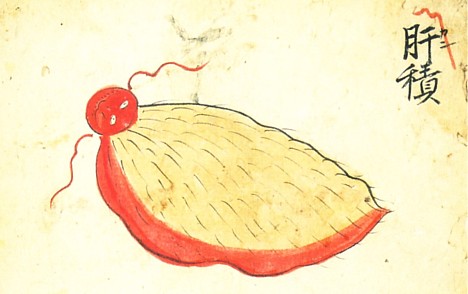
Kanshaku
Kanshaku, an angry-faced bug found in the liver, aggravates its host by violently thrusting itself upward toward the chest cavity. Infected people tend to shout with rage or engage in activities to blow off steam, and they crave acidic food and avoid eating oily food. Acupuncture can stop Kanshaku.
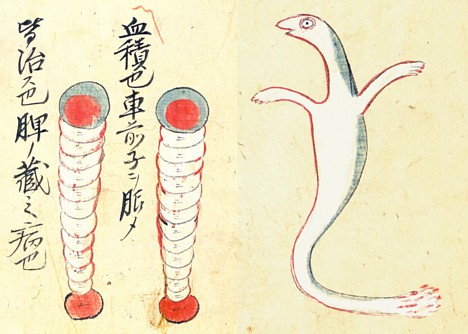
Hizo-no-kesshaku, Kanmushi
Hizo-no-kesshaku causes problems with the spleen, but it can be cured by ingesting shazenji (plantago seed).
Kanmushi is a harmful parasite that embeds itself in the spine, causing it to curve backward. Infected people also develop an appetite for spicy food. The herbs mokko (Saussureae radix) and byakujutsu (Atractylodes macrocephala Koidz) are effective in fighting off Kanmushi.
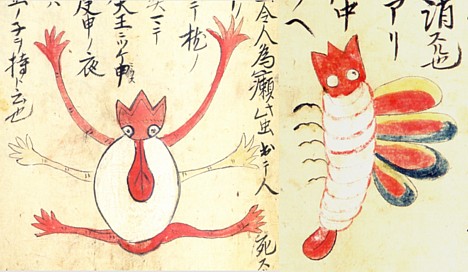
Gyochu, Haimushi
Gyochu, a deadly critter responsible for leprosy, acts as a messenger to the underworld. On the night of Koshin-no-hi (an important date occurring every 60 days on the Chinese calendar), Gyochu leaves the body to visit Enma-daio (Lord of the Underworld) and tell him of your misdeeds. Enma-daio is known to punish people for bad behavior by reducing their remaining time on earth.
Haimushi, a creature with an appetite for rice, causes problems with the lungs. If the Haimushi exits the lungs and cannot find its way back, it turns into a fiery will-o'-wisp (hitodama) and the person dies. The herb byakujutsu is effective in warding off Haimushi.
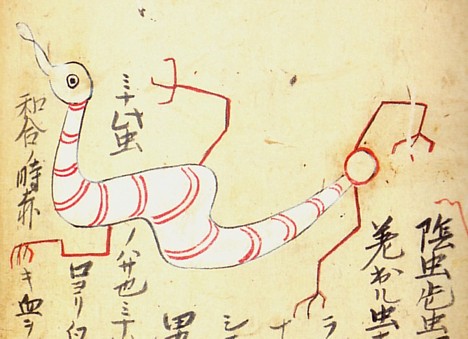
Kagemushi
Male and female versions of the Kagemushi appear during sexual intercourse. When the two bugs come together, their wiry legs get tangled up, the female bug spits up red fluid, and the male spits up white.

Hizo-no-kasamushi, Akuchu
Hizo-no-kasamushi, a worm found in the spleen, causes its host to gain or lose weight based on the amount of food it eats. The herbs agi (giant fennel) and gajutsu (purple turmeric) are effective in controlling Hizo-no-kasamushi.
Akuchu, also found in the spleen, consumes rice eaten by the host. Drinking mokko is an effective antidote.

Haishaku, Kakuran-no-mushi
Haishaku, a critter found in the upper lungs, has a nose that opens directly into its chest. People infected with Haishaku hate pleasant smells and foul smells, but are fond of strong, fishy smells. Other symptoms include extreme sadness and a craving for spicy food. Gentle, shallow acupuncture is an effective treatment.
Kakuran-no-mushi, a worm with a black head and red body, invades the stomach and causes vomiting and diarrhea. It is known to come up into the host's mouth and poke its head out. Try to grab it, and you choke for air, but let go and it returns peacefully to the stomach. The herbs goshuyu (Euodia rutaecarpa), shazenshi and mokko are useful in fighting Kakuran-no-mushi.
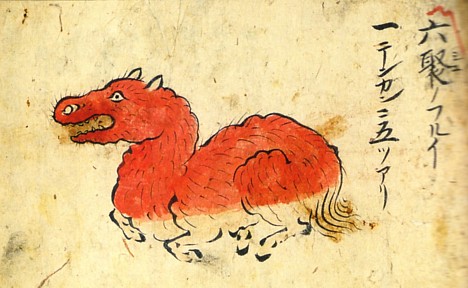
Umakan
Umakan, a beastie that causes heart problems, infects people outdoors in the scorching sun or in the vicinity of fire. Acupuncture is an effective treatment.

Koseu
Koseu (Kosho), a snake-like critter with a scruffy white beard, wears a hat that protects it from medicine. It likes to drink sweet sake and it can speak.
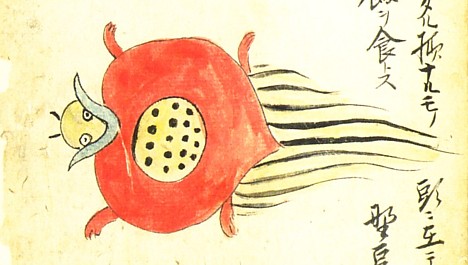
Kameshaku
Kameshaku eats rice and wears an umbrella-like hat that blocks medicine. It can be destroyed by eating wild beans.
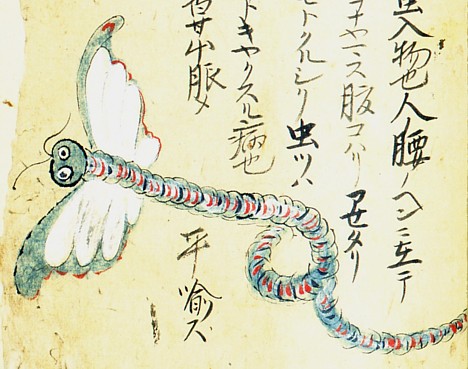
Koshi-no-mushi
Koshi-no-mushi flies into a host's body and makes its way to the lower back area, where it causes diarrhea, sweating and chest pains. The herbs mokko and kanzo (licorice root) are an effective treatment.

Chishaku, Hizo-no-mushi
Chishaku (Taibyo-no-kesshaku) appears in the stomach after a severe illness. It can be controlled by applying shukusha (wild siamese cardamom).
Hizo-no-mushi is found in the spleen. It causes dizziness and hot flashes when it grabs the host's muscles with its long arms and claws. It can be stopped by ingesting mokko and daio (rhubarb).

Kiukan and Kishaku
Kiukan (Gyukan) lives in the chest and acts up at meal time. This critter is difficult to get rid of, but acupuncture is an effective treatment.
Kishaku is a dark red beastie that causes its host to develop an unhealthy appetite for oily food. It can be stopped by eating tiger stomach.
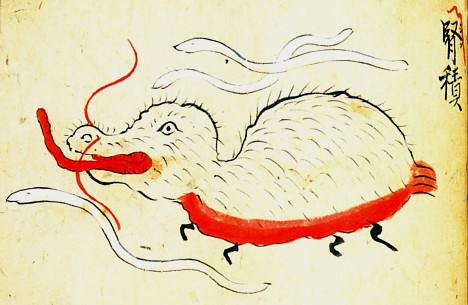
Jinshaku
Jinshaku (Honton) resembles a tiny boar that runs wild through the body. Those infected with Jinshaku develop a weak pulse, a dark complexion, a craving for salty food, and bad breath. Acupuncture is an effective treatment.
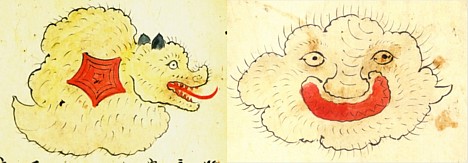
Hishaku, Hinosha
Hishaku is found in the spleen, most often in females. Symptoms include an overpowering appetite for sweets, a yellowish complexion, and a tendency to hum. It can be stopped with acupuncture around the navel.
Hinoshu, also found in the spleen, looks like a rock and remains dormant inside the body until the host visits a crowded sightseeing area, at which time Hinoshu causes dizziness by thrashing about and creating the sensation of rocks crashing against each other. Acupuncture is an effective treatment.
[Source: Kyushu National Museum]

 For those who believe laughter is the best medicine, now there is a way to measure the dosage. Researchers at Kansai University have developed a machine that can scientifically measure the quantity of a person's laughter, as well as distinguish between the real and the fake.
For those who believe laughter is the best medicine, now there is a way to measure the dosage. Researchers at Kansai University have developed a machine that can scientifically measure the quantity of a person's laughter, as well as distinguish between the real and the fake. 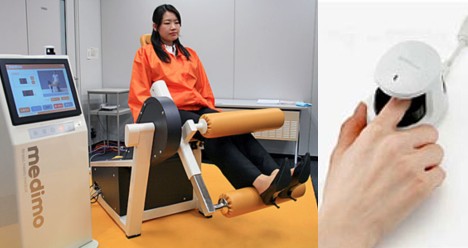
 Of the countless new electronic products to be unveiled in Japan this year, few are likely to generate the amount of buzz that will accompany the Japanese launch of the yet-to-be-announced 3G iPhone. For the time being, would-be iPhone fans are holding their collective breath for all the gory details and specs, which may or may not come out at MacWorld 2008 (January 14-18).
Of the countless new electronic products to be unveiled in Japan this year, few are likely to generate the amount of buzz that will accompany the Japanese launch of the yet-to-be-announced 3G iPhone. For the time being, would-be iPhone fans are holding their collective breath for all the gory details and specs, which may or may not come out at MacWorld 2008 (January 14-18). 
 This year will also see the rise of a new type of business in which medical institutions team up with fitness gyms to help customers fight metabolic syndrome. One such example is the Medical Fitness OreoS facility that opened in Okutama (Tokyo) in September 2007. Established through a partnership between the Seijo drug store chain and a medical corporation, the fitness center provides individual customers with health advice and exercise programs based on the results of thorough medical examinations. The company is looking to open new facilities in 2008.
This year will also see the rise of a new type of business in which medical institutions team up with fitness gyms to help customers fight metabolic syndrome. One such example is the Medical Fitness OreoS facility that opened in Okutama (Tokyo) in September 2007. Established through a partnership between the Seijo drug store chain and a medical corporation, the fitness center provides individual customers with health advice and exercise programs based on the results of thorough medical examinations. The company is looking to open new facilities in 2008. 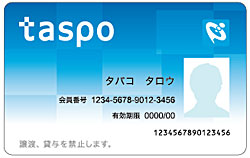 Smokers under the legal age of 20 will also feel the pinch as electronic age verification systems come to Japan's vast network of cigarette vending machines. In February, the Tobacco Institute of Japan will begin issuing age verification smart cards, called "
Smokers under the legal age of 20 will also feel the pinch as electronic age verification systems come to Japan's vast network of cigarette vending machines. In February, the Tobacco Institute of Japan will begin issuing age verification smart cards, called "
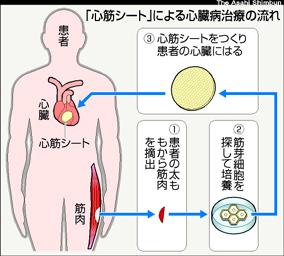 Medical researchers from Osaka University Hospital have succeeded in repairing the weakened heart of a severe cardiac patient by applying thin sheets of muscle tissue grown from cells taken from the patient's thigh. The regenerative medicine technique -- described as the world's first in which a patient waiting for an organ transplant was successfully treated using his or her own cells -- may one day provide an alternative to heart transplant, the researchers say.
Medical researchers from Osaka University Hospital have succeeded in repairing the weakened heart of a severe cardiac patient by applying thin sheets of muscle tissue grown from cells taken from the patient's thigh. The regenerative medicine technique -- described as the world's first in which a patient waiting for an organ transplant was successfully treated using his or her own cells -- may one day provide an alternative to heart transplant, the researchers say. 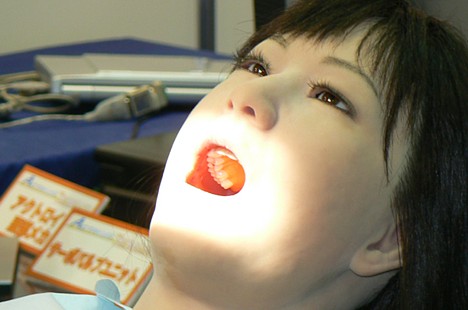
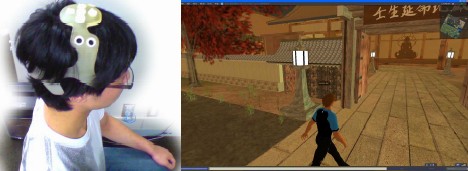
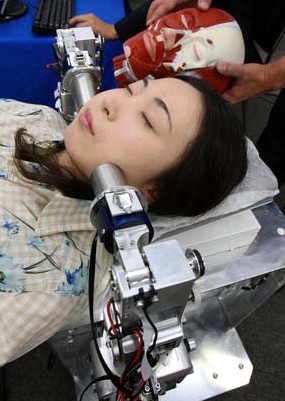 On October 9, professors
On October 9, professors 